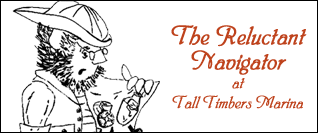Commentary by Tom Horton
It’s 1943. First light colors the summer Chesapeake off the fishing village of Rock Hall, revealing a six year old boy rowing a wooden skiff, struggling to do it quietly, so not to scare the bluecrabs his great grandfather dips as they run their trotline.
The crabs back then came up “thick as mosquitoes at dark,” several at once attacking the eel baits tied along the trotline. As they work, the old man teaches the boy skills he’d need in the water business; he also speaks with sadness about how the state arbitrarily changed the fishing rules, ending his long career as a top Bay captain.
If this were a novel the boy would grow up—after hard knocks and setbacks—to become the Bay’s most significant waterman. He would lead other watermen to reform the way fishermen were treated in Annapolis.
In this case, a biography written by Larry Simns (with friend Robert Rich), truth trumps fiction. Simns, the boy in the boat, is now 74. He has headed the Maryland Watermens Association since its founding in 1973, and MWA has been a force ever since.
The book may be out this spring, good timing, as that was the time Simns enjoyed “the prettiest fishing.”
It was when the dogwood blossomed and the wheat began to green, and great shoals of American shad surged in from the Atlantic to spawn. Simns was as hard charging for a big catch as anyone, but was also able to appreciate the skill and choreography of multiple boats precisely laying and pulling miles and miles of net that drifted on the Bay’s surface through soft spring evenings, intercepting the shad.
He still dreams of the shad’s return, though a 1980 moratorium on harvesting them remains in effect. “By the time the state shut fishing down, we were almost out of business,” he recalls.
Lessons from the shad failure, he thinks, pushed Maryland to lead other coastal states five years later in shutting down rockfish harvests—in time it turned out, as the species roared back to restored status six years later.
It was a brutal lesson for fishing towns like Rock Hall: “we lost our charter boats, our winter netting, a generation of young watermen, our ice houses...the whole infrastructure; it broke our back,” he recounts.
Yet Simns concedes the moratorium worked, and that it convinced him the science on which to base such hard choices had improved.
This is typical of the book in that Simns is not aiming to reignite old fights or rehash the strident politics of Chesapeake fisheries. The working title is “Best of Times on the Chesapeake Bay—An Account from a Rock Hall Waterman.”
Simns gives us insights on Rock Hall, death and suffering on the Bay, of his own progression from hard drinking, angry fisherman to a more peaceful place.
“I got faith mankind is smart enough to someday clean up the water in this Bay. . . if we’d stop polluting, what people like to call overfishing wouldn’t be that,” he said over breakfast in Rock Hall recently.
“I want to leave a record of the abundance I have known, so people will have an idea of what we need to get back to. I don’t want people to save this bay, because it’s not good enough. We need to restore it.”
Listening to great grandfather Captain Willie Stevens lent context to Simns’ desire to give watermen a voice. Maryland’s outlawing of purse seining made Stevens’ beloved pungy, Lightning, obsolete overnight.
But the real fuel stemmed from his encounter as a young waterman with a new recruit from the Maryland Natural Resources Police. He was boarded, found with more than 5 percent of oysters in one bushel under size, and ordered to dump his 150 bushels catch.
“No matter how I appealed for a recount, or to sample one more bushel, he wouldn’t acknowledge me. I am certain looking back that this inflamed me enough to invest the next 40 years defending watermen.”
It was a career that led to a day in 1973 when he and the late Senator Charles McC. Mathias spent the day alone on his workboat as the senator conducted the fact finding expedition that resulted in today’s Bay restoration, and that later led to meetings with both Presidents Ronald Reagan and Bill Clinton.
A long fight with cancer has slowed Simns: “they won’t let me aboard my own boat alone anymore.”
But he presses on, helping guide the Blue Crab Design Committee, a novel effort with the state, environmentalists and watermen to give crabbers much more control of how they fish, within an overall quota determined by scientists.
Tom Horton is author of six books about the Chesapeake. Distributed by Bay Journal News Service.


